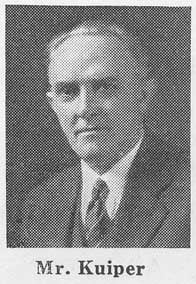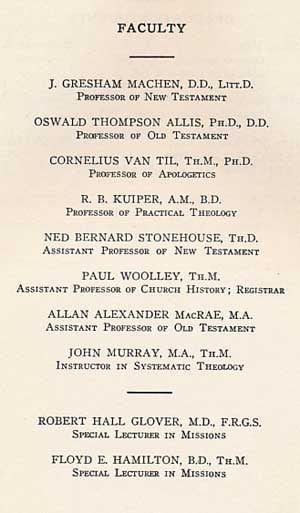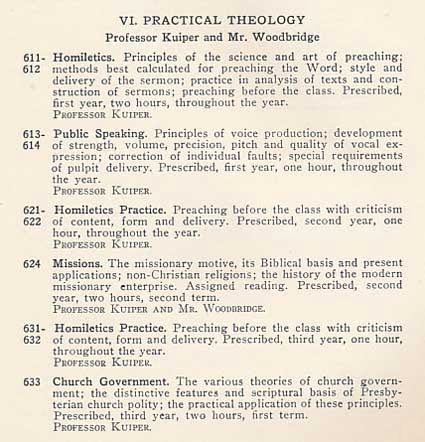The Assembly Subscribes the Solemn League & Covenant [1643]
Dr. Will Barker, former president of Covenant Theological Seminary and professor of church history at the Westminster Theological Seminary, Philadelphia, has written of “The Men and the Parties” that comprised the Westminster Assembly of Divines. The full text of this article can be found here: http://www.graceonlinelibrary.org/creeds-confessions/the-men-and-the-parties-by-william-s-barker/, but our post today focuses on the first portion of that article, where Dr. Barker provides a very helpful overview of the five groups which played a role in the history of this great Assembly.
I. The Parties
Discussions of the Assembly tend to focus on the different parties, often to the neglect of the great unity that existed among the members. It must never be forgotten that their first concern was for the gospel of Christ and for the unity of all who truly belong to him. One of the most beautiful chapters in the Confession, “Of the Communion of Saints”, begins: “All saints that are united to Jesus Christ their head by His Spirit and by faith have fellowship with Him…: (WCF XXVI/1). Further, as teachers they were all Calvinists in theology and could all be called Puritans, depending on the definition of that controversial term. The main controversy among them was church government and the related matter of church discipline, including the role of the state. The parties, therefore, are perceived along the lines of church polity: episcopalian, presbyterian, or congregationalist, with two additional categories being relevant – the Erastians and the Scottish delegation.
Episcopalians
All of the Westminster divines appointed by the Long Parliament in 1643 were ordained ministers in the Church of England, although many had refused to conform to some Anglican practices and some had temporarily gone into exile in the Netherlands. This means that they had entered the ministry in an episcopal system, and many still favored a moderate episcopacy. Men such as James Ussher, Archbishop of Armagh in Ireland, did not attend the Assembly because it did not have the approval of King Charles I. Others dropped out in the early stages. But all were opposed to prelacy, that is, the functioning of bishops like secular princes rather than as the teaching and preaching ministers of the New Testament. Some who favored a moderate episcopacy remained in the Assembly and were gradually persuaded to prefer the presbyterian position.
Presbyterians
The Presbyterians, who favored a system with parity of the clergy, but with a graded system of church courts so that local congregations were bonded together and in submission to a regional presbytery, and presbyteries were in submission to a national general assembly, were in the majority in the Assembly. They were of two persuasions, however: those who believed in presbyterianism by divine right – i.e., that it is the only system prescribed by the New Testament – and those who believed presbyterianism was simply the system most consistent with the principles of church government taught in the New Testament. The latter was the prevailing view among the English divines at Westminster.
Congregationalists or Independents
Those who favored congregational church government were led by a very able and vocal group that became known as “the five dissenting brethren.” These five had all gone into exile in the Netherlands in the 1630’s and had close relations with the congregationalists in New England. These were non-separating Puritans who wanted local church autonomy while still maintaining an association among churches and with the state. Although the Puritans of Massachusetts Bay enforced the New England congregational way through the civil magistrate, the English congregationalists were led by circumstances to prefer toleration.
Erastians
The Erastians, whose name is derived from a 16th-century Swiss theologian, were not in favor of any particular church polity – episcopal, presbyterian, or congregational – by divine right, but were mainly concerned that church discipline be finally carried out only with the approval of the state. This view was upheld in the Assembly by a small but learned group and was supported by many in Parliament, which had called the Assembly and whose approval was necessary for the implementation of the Assembly’s decisions.
The Scottish Delegation
As a result of the Solemn League and Covenant, approved by the Scottish Parliament on August 17, 1643 and subscribed by the English Parliament and the members of the Westminster Assembly on September 25, four Scottish ministers joined the Assembly in September of 1643. These were not voting members but had the right to speak. In exchange for the assistance of the Scottish army to the Parliamentary forces in the Civil War against the King, the Solemn League and Covenant sought to bring the churches of England and Ireland into conformity to the Reformed religion in Scotland in doctrine, worship, discipline, and government. The Scottish commissioners, with almost a century of presbyterian history behind them, favored presbyterianism by divine right.
Such were the parties that emerged as church government proved to be the most controversial issue in the Assembly. Again we should remember that all of the Westminster divines were Calvinists. As we look back to the Assembly with gratitude primarily for the setting forth of the Reformed faith in the Confession and Catechisms, we should celebrate the doctrinal unity which it had. Where there was diversity, there was also a spirit of accommodation on the part of many. Richard Baxter, a contemporary Puritan but not a member of the Assembly, had immense appreciation of its members and its accomplishments. He later commented that if all Episcopalians had been as Archbishop Ussher, all Presbyterians as Stephen Marshall (the great preacher of the Assembly), and Independents as Jeremiah Burroughs, the divisions of the church might soon have been healed.




